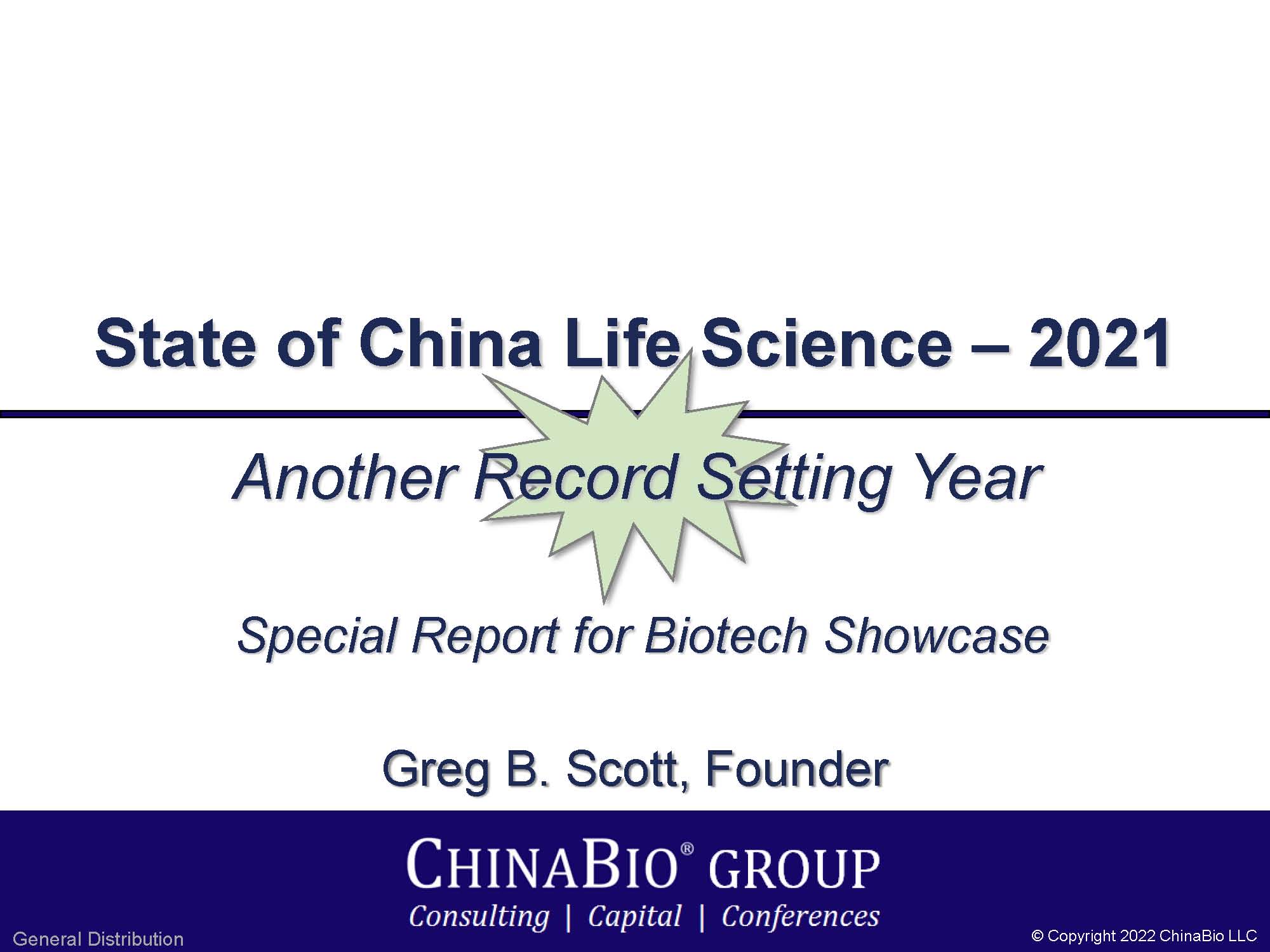Did you know?
ChinaBio® Group is a consulting and advisory firm helping life science companies and investors achieve success in China. ChinaBio works with U.S., European and APAC companies and investors seeking partnerships, acquisitions, novel technologies and funding in China.
Free Newsletter
Have the latest stories on China's life science industry delivered to your inbox daily or weekly - free!
Free Report
The "Cambrian Explosion" of Innovative Drugs in China Biopharma: Five Themes
China is currently in the middle of a "Cambrian Explosion" of new drugs, according to Franck Le Deu, Senior Partner and Head of Greater China Healthcare practice at McKinsey & Company. The Cambrian Explosion is the period in Earth's evolution marked by extraordinary growth in the diversity of animal phyla. The same growth is happening in China's biopharma ecosystem, with innovative drugs being approved and a flood of candidates in clinical trials.
Thinking about the new phase of China drug development, Mr. Le Deu distilled five general themes about the current state of China's biopharma sector. The following is a summary of Mr. Le Deu's observations:
Editor's note: A full version of Mr. Le Deu's comments is available on LinkedIn and at Awesome Investing.
1. Licensing is swelling Chinese biopharma ahead of a "real innovation" shake out
Because China's innovative life science companies depend heavily on in-licensings, each company's drug portfolio is larger than comparable companies in the west. Many of the drugs were in-licensed in late-stage development, a de-risked situation for the China startups, Le Deu reasons, that allows companies to get to revenue stage quickly, without spending a lot in upfront acquisition costs.
To be truly innovative, however, companies must discover and develop their own drugs to avoid being labeled as "only" a licensing company. As a result, companies often feature two tiers of assets in parallel development tracks, with drug portfolios larger than their western counterparts.
2. Chinese biopharma follows a classic herd effect
Oncology is the preferred target of China biopharmas, with a disproportionate share of the development energy. Le Deu points out that during the first 10 months of 2018, 60% of all CTA approvals in China were oncology candidates. One could also cite the 130 of so of PD-1/PD-L1 molecules in China development.
Mr. Le Deu grants that the unmet needs in cancer are huge -- 10,000 new cases of cancer diagnosed every day with five-year survival rates about half those in developed countries.
However, once the candidates are approved, the markets will be crowded with drugs that are often not differentiated. He expects clinicians will be able to choose from 20+ PD-1 offerings, with little reason to specify one over the other. Faced with this, most doctors will choose the first-to-market or the most commonly used.
There are also needs in cardiovascular, diabetes, respiratory, and infectious diseases, Le Deu says, but relatively few domestic companies focus on these areas.
3. Quality could be the ultimate differentiator, and quality control is a major risk factor
Le Deu said McKinsey interviewed Chinese biopharma leaders recently, asking “What keeps you up at night?” The usual answer was "talent," but "quality" is equally important to them. To insure quality, Le Deu opines that companies must find people with the right experience. In a broad characterization, he states there aren't enough pharma executives in China with experienced backgrounds to satisfy the need, and quality will suffer as a result.
4. Expect China prices to have a major effect on developed markets
Because China wants affordable drugs, China biopharmas will work to maximize volume of approved drugs at price points lower than multinationals, especially for oncology and immunotherapy products. For example, Junshi Bioscience launched the first China approved PD-1, Tuoyi, at a 50% discount to multinational prices for similar products.
The pricing could have a profound effect on global markets as China pharmas extend their marketing outside of China. In fact, Le Deu believes China could become a reference point for both pricing and reimbursement in other emerging markets, and maybe even developed markets.
5. Patience is needed, but breakthrough innovation is on the way
McKinsey, in its latest China Drug Innovation Index, published last November, highlighted the “fast and slow” development of China’s innovation ecosystem. "Fast" described China's regulatory changes and integration with global innovation, while "slow" applied to capability and quality of Chinese innovation. According to Le Deu, the vast majority of China molecules are “me too/me better” with known mechanisms of action.
Some differentiation exists, but most candidates are not breakthroughs. The majority of elements required to foster breakthrough innovation are still in their infancy in China, he says, a world that could benefit from more collaboration and scientific risk-taking (of the good kind).
However, concludes Le Deu, "It would be unwise to discount the potential of China to emerge as a credible new hotspot of global innovation. The convergence of resources, talent, and policies is gaining momentum. If we had to bet, we would say that within a five-year horizon, we will see a drastic uptick in the quality of innovation coming out of China. Will it rival the U.S.? Clearly not. Will it become even more meaningful on the global stage? Undoubtedly."
As a follow-up, Le Deu promised to present some thoughts in the near future on how China biopharmas can stay at the head of the pack as the race to achieve genuine innovation unfolds.
Disclosure: none.
ChinaBio® News

Greg Scott Interviewed at BIO-Europe Spring
How to bring your China assets to China in 8 minutes

"Mr. Bio in China."
Mendelspod Interview
Multinational pharma held to a higher standard in China





